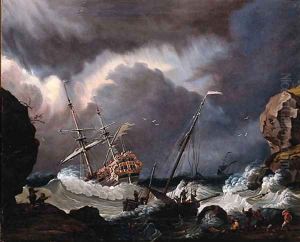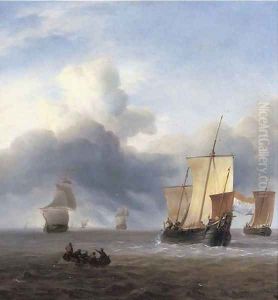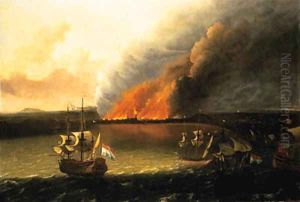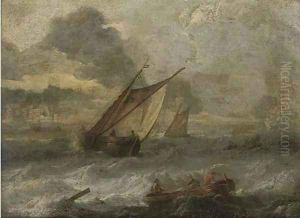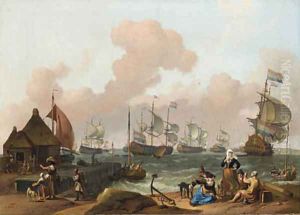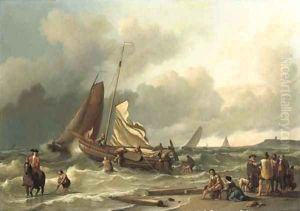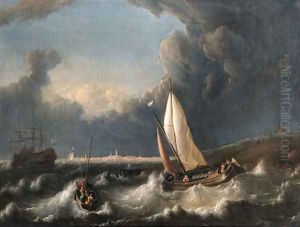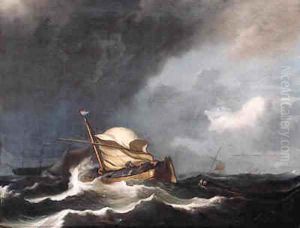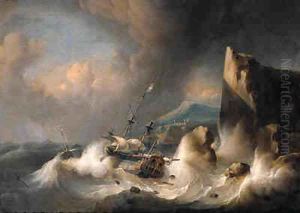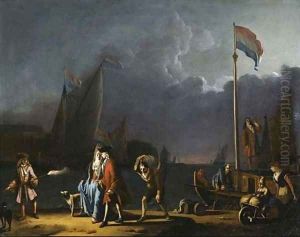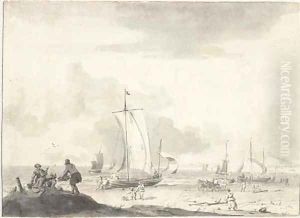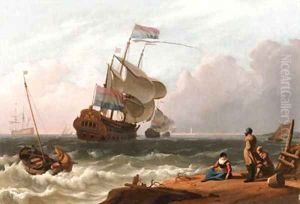Ludolf Backhuyzen Paintings
Ludolf Backhuyzen, also spelled Ludolph Bakhuizen or Backhuysen, was a prominent Dutch painter and draftsman who worked during the Golden Age of Dutch art. Born on December 18, 1630, in Emden, East Frisia (now Germany), Backhuyzen moved to Amsterdam in his youth, where he would spend the majority of his life and career.
In Amsterdam, Backhuyzen apprenticed under the painters Allart van Everdingen and Hendrick Dubbels, who were known for their marine paintings. This training helped to shape Backhuyzen's focus on seascapes and ships, subjects for which he would become renowned. By the 1660s, he had established himself as a leading artist in this genre, and his works were in high demand by wealthy merchants and naval officers who appreciated the accuracy and detail of his ship portrayals.
Backhuyzen's marine paintings are characterized by dramatic skies, meticulous detail, and a keen sense of the power and majesty of the sea. He often depicted ships in distress, naval battles, calm harbors, and bustling seaports, capturing the essence of Dutch maritime supremacy during the 17th century. Furthermore, his skill in capturing the reflections of light on water and the intricate rigging of ships was highly regarded.
In addition to his paintings, Backhuyzen was also an accomplished draftsman and etcher. He produced a number of detailed drawings and etchings that offer insight into his working process and the development of his compositions. His works are held in high esteem and can be found in major museums around the world, including the Rijksmuseum in Amsterdam and the National Gallery in London.
Backhuyzen continued to paint until late in life, and his later works show no decline in quality or vigor. He passed away on November 17, 1708, in Amsterdam. Today, he is remembered as one of the foremost marine painters of his time, and his work continues to be studied and admired for its contribution to the Dutch maritime art tradition.
